| |
|
|
| |
Six safe bets for summer.
Thu 20th October, 2011
|
|
|
|
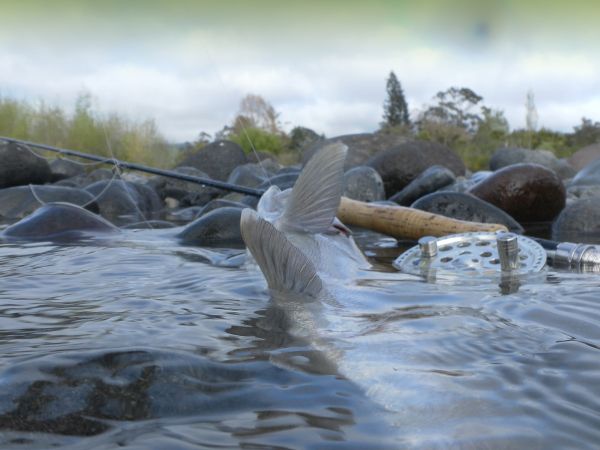
Things are settling down again after the high levels and colored conditions of the past week or so. The Tongariro peaked at three hundred plus, then after it had dropped rose again a few days later to over sixty cumecs. This doesn't seem to have done that much damage to the insect life below the surface and the last couple of days have seen fish taking advantage of reasonable mayfly hatches. One of my regulars rang me earlier and told me he had taken some nice fish for the smoker on an emerger pattern and he didn't get on the water until this afternoon. The bigger flood has caused some changes here and there but nothing too drastic. An obvious man made difference is the work in progress around the Honeypot.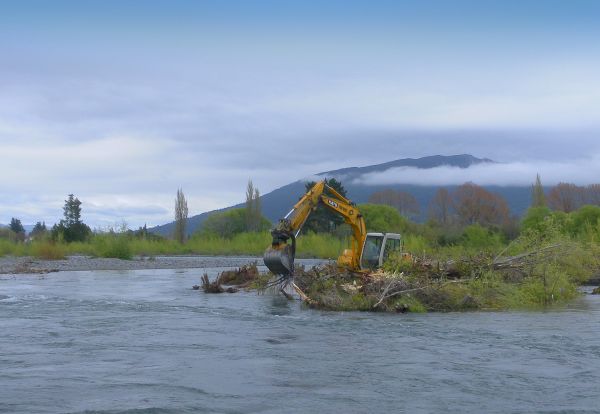 The digger that's been ripping out the willows along the Hirangi Arm prior to burning, has also cleared the fallen trees and other debris deposited in the tail of the Honeypot after the earlier January fresh. This has caused the flow to pick up down the true left bypass. First indications are it may also cause more water to flow down the middle and right hand side towards the Plank. Before they carried out this tidy up the middle looked as if it might completely dry up, which would have been a shame. The digger that's been ripping out the willows along the Hirangi Arm prior to burning, has also cleared the fallen trees and other debris deposited in the tail of the Honeypot after the earlier January fresh. This has caused the flow to pick up down the true left bypass. First indications are it may also cause more water to flow down the middle and right hand side towards the Plank. Before they carried out this tidy up the middle looked as if it might completely dry up, which would have been a shame.
This was a nice stretch of water at one time particularly the top part as it tumbled down from the tail of the old Honeypot. Its still early days and will take a little time for the river to sort things out but we'll probably see some positive changes here over summer.
On the summer theme, below are half a dozen suggestions that I find work when nymphing during the warmer weather. They are not listed in any order of preference and I enjoy using all of them. 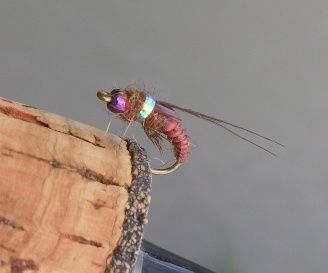
Mercer's little brown bug is another fantastic pattern deigned by Umpqua Feather Merchant's contract fly tier Mike Mercer. He is credited with over sixty successful flies which are popular all over the world. In the U.S this one imitates the mature nymph stage of the little Brown Stonefly. Here on the Tongariro I use it as the point nymph under the indicator fly whenever there's a hatch.
It doesn't seem to matter whether they are feeding on mayfly or caddis, trout will still take this one. It will also catch tied off the bomb but I've had better results doing this using a slightly longer tippet. Ideal choice in fast riffles or the shallower inside seams at the head of a pool.
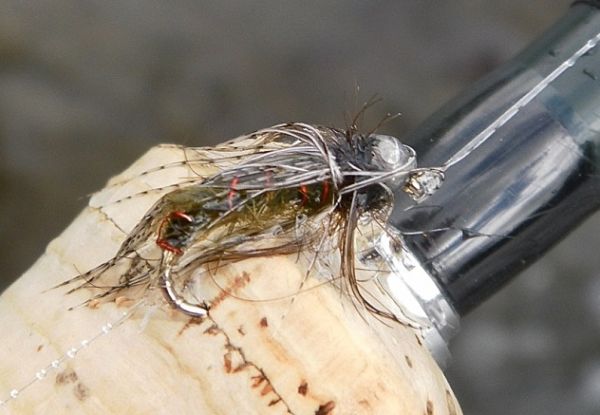
Marcel's Olive BH caddis emerger is one I've mentioned heaps of times. Its nearly always my second nymph under the big dry and I've been using it for quite a while now. A simple looking pattern that comes to life when wet. The soft partridge hackle gives the fly movement and a profile that suggests the pupal stage of the natural insect. Used in the right water its a fly that I'm one hundred percent confident will take fish any where on the Tongariror and is fast becoming a favorite with others who have tried it.
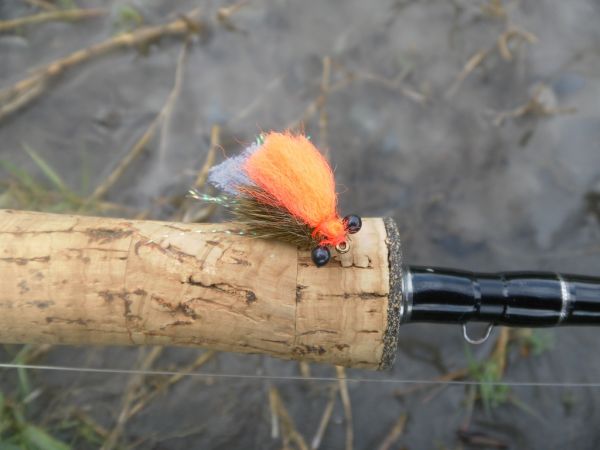
The deer hair cicada with or without rubber-legs is one of the most popular big dry flies when trout have clocked onto these large terrestrials. I use it all year round as the indicator when nymphing with the dry and dropper set up. Although its a large pattern that floats high, in certain light it can still be difficult to pick out, especially when fishing broken water. But you can easily modify it by tying in some fire orange yarn just behind the eye of the hook. Viewed from below, the fish can't see this visual aid but it makes a huge difference when your tracking the fly as it carries your nymphs downstream. Takes on this rig are incredibly sensitive and the cicada will usually just disappear, at times however they can also be quite subtle. Then the fly will just appear to change direction slightly or in faster water small bubbles will appear in front of it as its downstream journey is interrupted when a fish takes hold of one of the flies suspended below. There is no need to strike hard when fishing this method, a smooth raising of the rod tip will normally do the trick. If you think about it you only have to move the nymph a few millimeters to set the hook... the distance from the point, past the barb. Often because the flies are presented in this more natural way the fish will hook themselves and is a great way of exploring water that you might otherwise overlook.
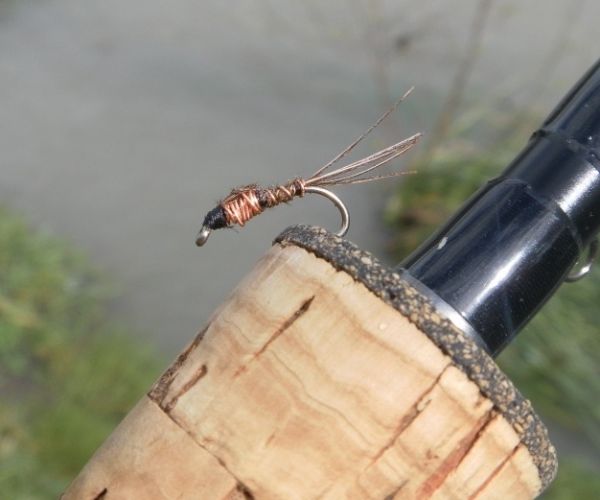
The Pheasant Tail nymph is a pattern found in some form in every anglers fly box around the globe. Hundreds of variants have appeared since Frank Sawyer invented it over fifty years ago but you won't go far wrong if you choose the ones tied the more traditional way using the copper wire to form the thorax. Usually fished off the bomb but also a great alternative as the point fly on the dropper rig. This is a must fish fly when trout are feeding on mayfly nymphs and one I wouldn't be without.
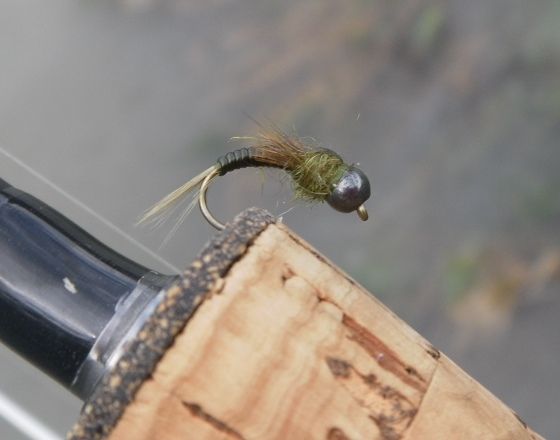
The Olive BH mayfly nymph {Sean's Magoc May} is another versatile pattern that works under the big dry or tied on a longish dropper off the bomb. In size 12 its the only one I ever use instead of Marcel's emerger pattern and in clear summer conditions the smaller sizes are also effective when tied below it. The only draw-back I've found when using the commercial patterns is because they are tied on a finer gauge hook they will sometimes begin to straighten on a strong fish. Even so a cracking fly to try in the warmer months when mayfly abound throughout the river.
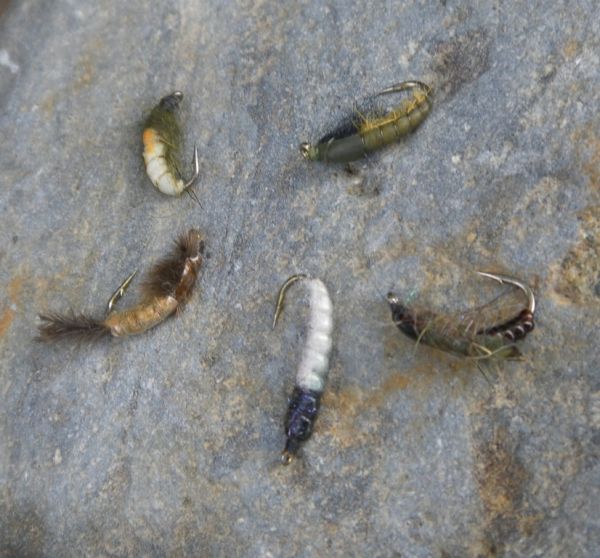
Caddis is probably top of the list for feeding trout once they enter the river. The Tongariro supports a huge caddis population and I'm not the only one to have retrieved their artificial offerings at the end of a drift and found caddis larvae impaled on the point of the hook. Colors vary but the most often used are olive/green or off/white. There are dozens of patterns to choose from but the ones tied with a defined body segmentation better mimic the natural. If your not sure which color to go for turn over a few rocks before you cast out, there should be plenty on the underside.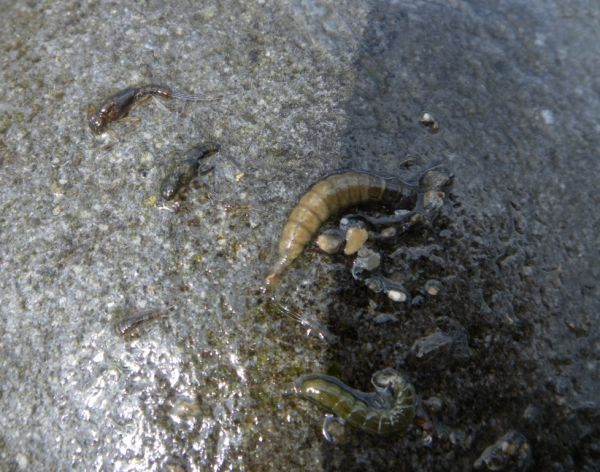
More good runs this week with reports of limit bags and plenty of silver fish taken from the Braids to the Blue Pool. We've probably only got a few weeks left before the main migration slowly begins to fizzle out so get up here and make the most of some great fishing. A lot more anglers around since last weekend and most of them have South African accents...have they lost interest in the rugby? Wales against the Ozzie's next and this surely has all the ingredients to be one of the tournament's best games so far. I'll have to be careful this time, don't want to lose my voice before that other game on Sunday.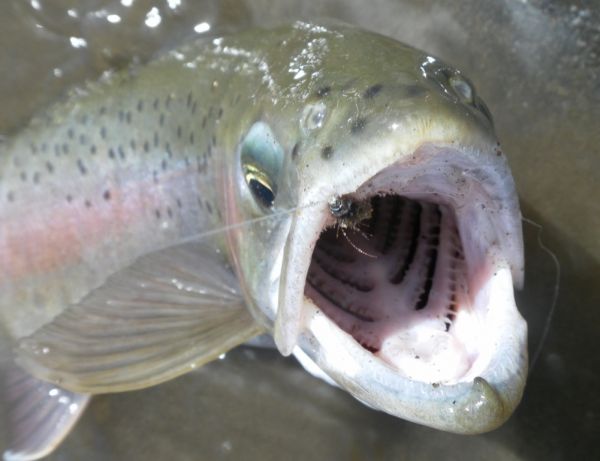
Joking aside best of luck in the final guys
Mike |
|
|
| Back to Top |
|
|
|
|
|
|
|